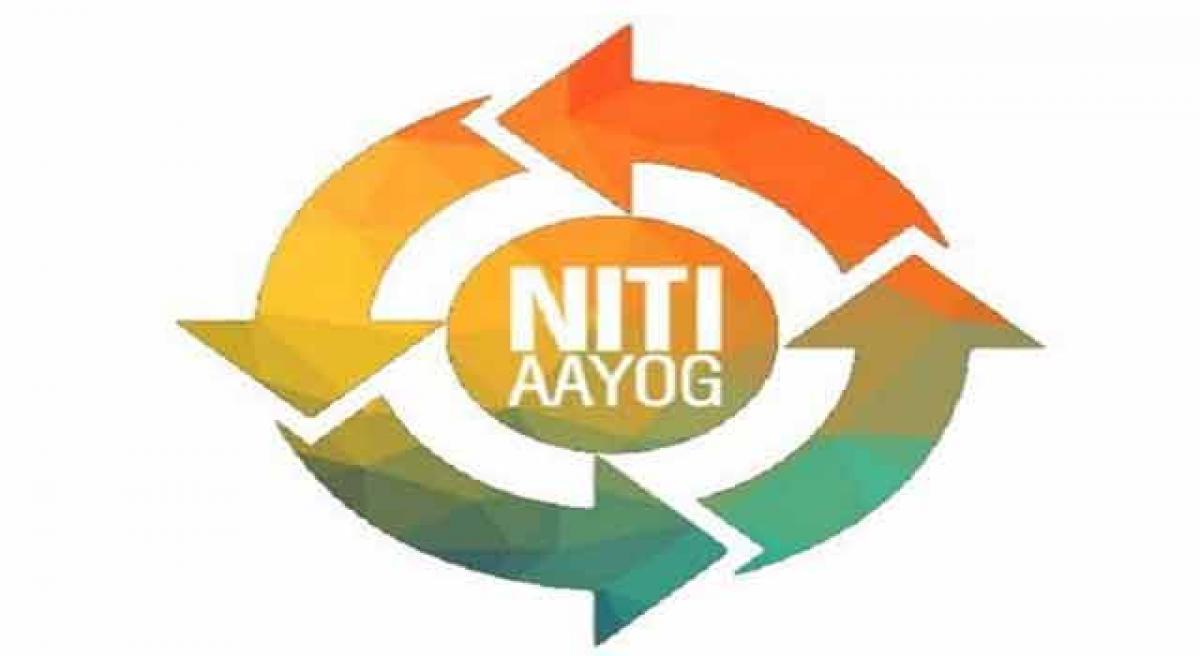Live
- Textiles parks to be set up in Anantapur & Kurnool dists
- 2nd batch of capacity building programme begins at IIM-V
- Blooming Minds receives ‘Best School’ award in TG
- Nagarkurnool: Students told about harmful effects of tobacco
- Unlock Exclusive Rewards with Daily Redemption Codes in Garena Free Fire MAX
- Srikakulam youth Tripurana Vijay to makes IPL debut with Delhi Capitals
- RRR oustees urge KTR for help
- Mahabubnagar: Illegal sand mining rampant
- Better amenities demanded at govt hospital
- 2,000 quintals of cotton burnt to ashes!
Just In

India’s government has set itself the ambitious goal of eradicating poverty over the next decade-and-a-half by stepping up plans to upgrade the economy in a way that will add millions of jobs.
India’s government has set itself the ambitious goal of eradicating poverty over the next decade-and-a-half by stepping up plans to upgrade the economy in a way that will add millions of jobs.
A recent report by NITI Aayog, the country’s planning commission, outlined New Delhi’s roadmap helping the hundreds of millions of Indians that now live below the poverty line.
The most important thing is that gross domestic product growth accelerates to around 10 per cent from around 7 per cent now, said Amitabh Kant, chief executive officer of NITI Ayog, in the report.
“Growing at 10 per cent will transform India,” he said. “The country will be a $10 trillion economy with no poverty in 2032.” Here are five of the most important steps India plans to take to prop up its poor.
Build connections
The government aims to spend two trillion rupees ($30 billion) this fiscal year which started in April on building a vast network of roads and railways, completing 10,000 km (6,214 miles) of road projects and upgrading 50,000 kilometers of state highways. It also aims to upgrade small airports and expand the country’s power grid to reach every village.
Create manufacturing jobs
Mr. Modi’s government intends to create employment for hundreds of thousands of young people by opening thousands of training institutes. India has the world’s second-largest workforce of around 490 million. The government’s ‘Make in India’ drive seeks to promote local manufacturing and generate jobs. At present, India’s share of manufacturing to its gross domestic product is a meagre 15 per cent, which authorities intend to increase to 25 per cent over the next few years.
Reduce red tape
One of the top priorities of the government has been to reduce the maze of bureaucratic procedures for companies and investors. Authorities say they intend to repeal more than 1,000 archaic laws to facilitate growth and improve the ease of doing business.
Modernise farming
In a country where over half of the population depends on the farming sector, the government hopes to bring the latest technology to farms in the form of the right seeds , fertilizers and irrigation facilities. It also proposes four mega food parks, agriculture and horticulture-processing zones with state-of-the-art processing facilities and infrastructure, and more than two dozen cold chain projects that would help preserve perishable goods.
Get greener
To clean its air and reduce its massive fuel import and subsidy bills, Indian authorities want to improve fuel-efficiency rules for vehicles, and incentivize the construction of energy-efficient buildings. To improve the efficiency of state-run coal companies, the government plans to set up 15 new facilities for cleaning coal.
Courtesy: The Wall Street Journal
By: Rajesh Roy

© 2024 Hyderabad Media House Limited/The Hans India. All rights reserved. Powered by hocalwire.com







